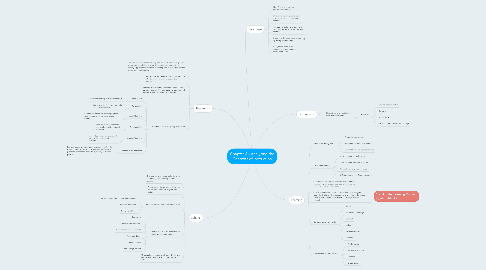
1. Cultural
1.1. The learned and shared behavior of a community of interacting human beings
1.2. Ethnocentric - based primarily on the values and standards of your own culture
1.3. Educate yourself about another culture
1.3.1. Government and Commercial Resources
1.3.2. Personal Interviews
1.3.3. Sociological Shift
1.4. Factors that may be impacted by the target learner's culture
1.4.1. Pedagogy
1.4.2. Instructor vs Facilitator
1.4.3. Group vs Individual Learning
1.4.4. Accommodation
1.4.5. Learner Control
1.4.6. The Design Process
1.5. Organizational culture or climate - behaviors and beliefs that guide and organiztion's actions
2. Theoretical
2.1. Learning theory is based on empirical research and assumptions about how people learn, it provides and explanation of the underlying processes involved in learning and it is used to predict further learning behavior
2.2. Assumptions are beliefs or ideas that we hold to be true, with or without supportive evidence
2.3. Principles describe how particular factors affect learning, and practitioners develop teaching and learning strategies based on principles.
2.4. Theories used in designing instruction
2.4.1. Behaviorists
2.4.1.1. behavior that is positively reinforced
2.4.2. Cognitivists
2.4.2.1. learning is the linking of new info to prior knowledge
2.4.3. Social Theorists
2.4.3.1. novices can complete challenging tasks when helped by more experienced others
2.4.4. Constructivists
2.4.4.1. learning through authentic real-world experiences and reflection
2.4.5. Situated Theorists
2.4.5.1. knowledge should be presented and applied in authentic contexts
2.4.6. Distributed Congnition
2.4.6.1. knowledge is distributed and resides, not just in the mind, but in the connections made by individual to practices, processes, artifacts, symbols, and other people
3. Five Steps
3.1. Identify and analyze the performance context
3.2. Define the learning context and compare it to the performance context
3.3. Analyze the culture and climate of both the performance and learning context
3.4. Determine the assumptions help by all key stakeholders
3.5. Analyze the contextual relationships and compile recommendations
4. Performance
4.1. Situated learning - context in while learning occurs
4.1.1. Analyzing
4.1.1.1. Physical characteristics
4.1.1.2. Support
4.1.1.3. Social Aspects
4.1.1.4. Relevance of Skills and Knowledge
5. Learning
5.1. When considering, ask...
5.1.1. Physical characteristics
5.1.2. Personnel or Time Constraints
5.1.3. Compatibility with Learner Needs
5.2. Time/Place Access
5.2.1. Same time and same location
5.2.2. Same time and different location
5.2.3. Different time and same location
5.2.4. Different time and different location
5.3. Connectivist approach - choosing the internet as the learning context and prompting the learners to find and link to information
5.4. Cult of the amateur - web 2.0 tools that allow everyone (even the ill-informed) to participate in creating and posting items to the internet have resulted in an explosion of context
5.4.1. Planning the Learning Context, pg 68, Table 4.2
5.5. Communication Elements
5.5.1. Source
5.5.2. Instructional message
5.5.3. Channel
5.5.4. Noise
5.5.5. Receiver (learner)
5.5.6. Feedback
5.6. Perspectives on the process
5.6.1. Psychological
5.6.2. Social constructivist
5.6.3. Systemic
5.6.4. Critical theory

